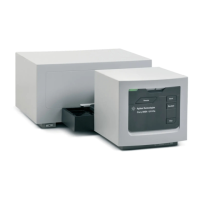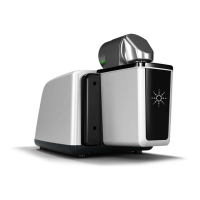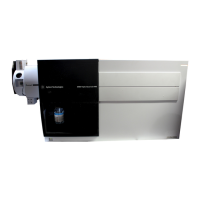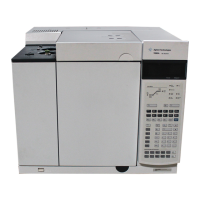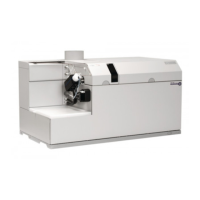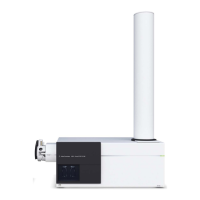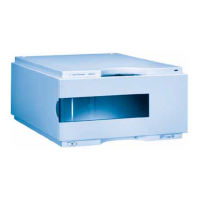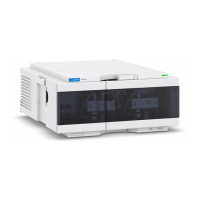Do you have a question about the Agilent Technologies Cary 3500 and is the answer not in the manual?
| Type | UV-Vis Spectrophotometer |
|---|---|
| Wavelength Range | 190 - 1100 nm |
| Temperature Stability | ±0.05 °C |
| Light Source | Xenon flash lamp |
| Detector | Photomultiplier Tube (PMT) |
| Weight | 35 kg |
| Interface | USB, Ethernet |
| Software | Cary WinUV |
| Stray Light | < 0.00008 %T at 220 nm (NaI) |
| Resolution | 0.2 nm |
| Noise Level | < 0.00005 Abs RMS (500 nm) |
| Scan Rate | Up to 2400 nm/min |
| Data Acquisition | Double Beam |
| Data Interval | 0.1 nm |
| Temperature Range | 0 - 110 °C |
| Sample Types | Liquids, Solids, Films |
| Sample Holder | Standard 10 mm cuvette |
| Detector Type | PMT |
| Power Requirements | 100-240 VAC, 50-60 Hz |
| Scan Speed | Up to 2400 nm/min |
Lists additional documentation available for setting up and operating the spectrophotometer.
Explains the typographical conventions used throughout the documentation for clarity.
Defines 'Note' for advice/information and 'Tip' for practical hints.
Outlines safety precautions to ensure the instrument is returned to a safe state after maintenance.
Describes the lamp module and warns against disassembling it due to high voltages.
Identifies customer-accessible panels and those requiring service engineers.
Provides safety guidelines for storing and handling compressed gas cylinders.
Advises on safe handling of hazardous materials, solvents, and solutions.
Lists and explains symbols indicating hazards like electrical shock and hot surfaces.
States compliance with EU Electromagnetic Compatibility and Low Voltage Directives.
Discusses EMC requirements for Class A equipment and operating conditions.
Details compliance with EN55011/CISPR11 standards for ISM equipment.
Confirms compliance with Canadian ICES-001 standards for ISM devices.
Requires users to prepare the site according to a checklist before installation.
Specifies the measurement category (IEC61010:I) and restrictions on its use.
Defines the pollution degree (IEC61010:2) as '2' for normal indoor atmosphere.
Details recommended environmental conditions for optimal performance, including temperature and atmosphere.
Provides information on physical dimensions and weight, including lifting precautions.
Covers power requirements, connection locations, and switch positions.
Discusses power cord usage, installation compliance, and grounding requirements.
Lists recommended computer hardware and operating system specifications for the workstation software.
Specifies requirements for compressed gas (nitrogen or air) for Peltier-controlled modules.
Introduces the modular design of the Cary 3500 UV-Vis system.
Explains how modules couple with the engine to provide measurement functionality.
Describes the Multicell module's features, including thermal control and zones.
Describes the Compact module's features, including thermal control for two cuvette positions.
Lists the available configurations for the Cary 3500 UV-Vis system.
Details the Cary 3500 UV-Vis Temperature Probes for individual zone temperature control.
Provides a visual overview of the instrument components, referencing module and engine layout.
Identifies components on the front and right side of the module and engine.
Identifies components located on the back of the engine.
Identifies components on the front of the engine.
Identifies components on the back of the module.
Explains the meaning of the LED indicator on the front of the module for system status.
Guides users on accessing the Cary UV Workstation Help and Learning Center for software usage.
Explains the use of nitrogen or compressed air purging for the sample compartment.
Details the Cary 3500 UV-Vis Purge Kit, including its components and pressure requirements.
Describes the drain outlet for spills and the necessary tubing and vessel for disposal.
Explains the location and replacement procedure for instrument fuses.
Provides instructions for cleaning spills in the sample compartment and cuvette positions.
Lists available spare parts for the Cary 3500 UV-Vis instrument.
